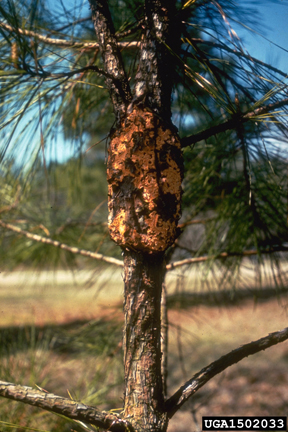Forests are major carbon sink in terrestrial ecosystems and are significant source of biomass for producing cellulosic biofuels. Loblolly and slash pines are the cornerstones of the US forest products industry, especially in the southeastern United States where nearly two billion loblolly pines and 200 million slash pine seedlings are planted annually in an area equivalent to the size of the state of Connecticut. In the 1950s, foresters recognized the presence of rust resistance in southern pines, and fusiform rust fungus is the single most important disease limiting pine productivity in the region and infects both oaks and pines.
Widely distributed throughout the Gulf and South Atlantic states, rust fungus infections cause spindle-shaped swells known as galls on form on the points of infection, usually the branches and stems of the trees. The infection most severely affects trees under 10 years old but also makes older trees susceptible to breaking in heavy storms. As rust fungi are dependent on living plant tissues and form close associations with host cells, giving pine trees the genetic ability to resist this infection helps increase pine yields for feedstocks as well as carbon sequestration.

Photo: Sporulating gall on pine,
USDA Forest Service – Region 8 Archive, USDA Forest Service, Bugwood.org
Principal Investigators: Thomas Kubisiak, US Forest Service, Southern Research Station
Program: CSP 2010